
views
Selecting a Growing Site

Consider how you will market your ginseng. Before you even start preparing to grow ginseng, make sure that you will have a way to sell it when it is mature. One option is to connect with a licensed ginseng dealer in your state. You may be able to visit their location with your ginseng, have it weighed, and get a price quote on the spot. If you don’t like the price they give you, then you can simply try a different buyer. You can check your state’s registry of licensed ginseng dealers to find one in your area. There may be several in your area that you can visit to find the best price for your product. If you want to cut out the middle man and sell and export ginseng yourself, then you might consider getting a dealer license. The rules for dealer licensing vary by state, so check to find out what your state’s regulations are. You will at least need to complete an application and pay a fee. Some people also sell their ginseng on an auction site, such as eBay. However, you will still need to have an export license to do this.
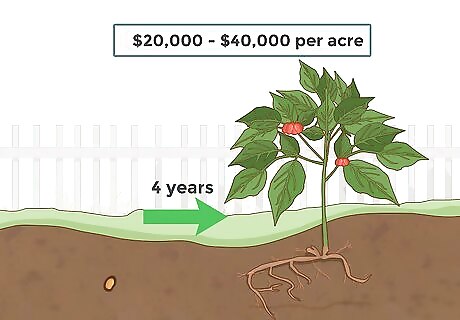
Understand the wild-simulated ginseng growing method. This method mimics the plant's natural environment. While ginseng grown this way typically takes eight years to mature, the end result is much more valuable than field-cultivated ginseng due to its color and shape. You may attempt to alter this process by using artificial shade or tilling the soil, but then you will be growing woods-grown ginseng, which may grow into a different, less valuable shape. The field cultivation method results in a mature plant at 4 years, but requires intensive labor, greater risk of disease spreading, and roughly $20,000 to $40,000 per acre. Most small scale farmers opt for the method described here instead, which results in a much more valuable plant and costs roughly $2,600 plus labor. Note that these costs are rough estimates.
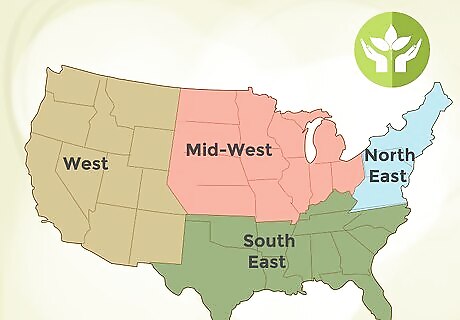
Find out if you live in the right environment. If you want to grow ginseng using the "wild-simulated" method, you'll need to have land within the plant's natural range. Ginseng grows in cool, temperate climates containing hardwood forests in areas of 20 to 40 inches of annual rainfall. This type of environment is found in areas of the northwest, midwest, and northeast United States, southern Canada, and mountainous regions of the southern United States. If you are not sure whether ginseng can be grown in your region, search online or contact your state or region's wildlife management department.
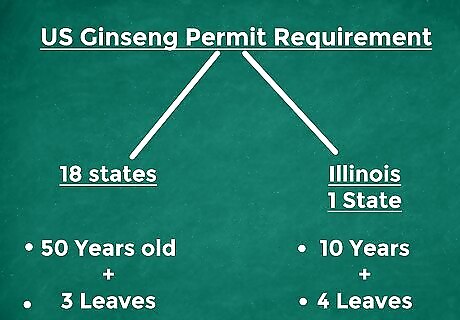
Obtain any necessary permits or licenses to grow and sell ginseng. State regulations on growing ginseng vary, but you will often need special permits or licenses, especially if you are growing for commercial harvest. Research regulations for your area, and contact your local extension service or state agriculture or commerce departments to find out what you need to do to legally grow ginseng. You should also look into organic certification well before planting your seeds. The "wild-simulated" method as described here is organic. Of the 19 U.S. states that allow ginseng harvesting, 18 of them require any plants harvested to be at least 5 years old with 3 leaves, while Illinois requires the plants to be at least 10 years old with 4 leaves.
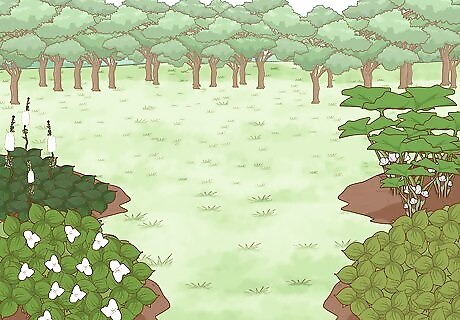
Select a suitable site. Ginseng grows best in well-shaded sites (especially on north- or east-facing slopes) of moist hardwood forests, especially ones with deep-rooted, deciduous trees such as yellow poplar, oak, sugar maple, or tulip poplar. Mature forests with large hardwood trees and a canopy that blocks at least 75% of sunlight are ideal. Shrubs, briars, and other tall, thick undergrowth can compete with the ginseng and take up most of the available nutrients, leaving little for the ginseng. Probably the best way to determine if a site is appropriate is to look for wild ginseng growing there. Since wild ginseng is so rare, you can also get some idea of suitability if "companion plants" such as trillium, cohosh, jack-in-the-pulpit, wild yam, goldenseal, Solomon’s seal, wild ginger, or rattlesnake ferns are present. Search for pictures of these online and check which grow in your area, or have a local botanist assist you. In addition, be aware that ginseng poachers are a serious problem: Be sure to choose a spot that is hidden from public view and not near a hiking trail or roadway.

Evaluate and test the soil. The soil should be loamy and moist, yet able to drain quickly. Avoid swampy soil and hard clay. When you have a site in mind, take several soil samples of equal quantity from around the potential planting site and mix them together in a plastic bucket. Have a soil analysis performed at a state soil test laboratory or university. Your garden supply store may have a kit that you can use yourself to test soil pH, but calcium and phosphorus tests are more difficult to perform on your own. While there is some controversy over what type of soil is best, qualities to look for include a pH of 4.5 to 5.5 (acidic soil), calcium levels of 3,000 to 5,000 pounds per acre (~0.35 kg per square meter), and phosphorus (P) levels of at least 95 pounds per acre (0.01 kg per square meter). Soil with the right level of moisture should not ball up in your hand or stick to your skin when you squeeze it. Some growers prefer a more neutral pH between 6 and 7. Unfortunately, there have not been enough definitive studies to determine the perfect environment for ginseng, but it should grow adequately in any pH range from 4 to 7.

Fertilize if necessary. If you find a site that is perfect except for its soil chemistry, you may wish to amend the soil in the plot to adjust the pH or increase the quantities of phosphorus or calcium. If you want to sell wild-simulated ginseng instead of woods-cultivated, you must avoid fertilizer, or at least apply the fertilizer to the surface of the soil instead of mixing it in. The soil pH may be raised by adding lime (calcium carbonate), and calcium level can be increased--without altering pH--by the addition of gypsum (calcium sulfate). Note that ginseng is able to grow in areas with lower calcium or phosphate, but may produce smaller roots or grow more slowly. Consider spacing the plants further apart in these situations so plants aren't competing for the same nutrients. Also, be sure to test and amend the soil once every year
Preparing the Seeds
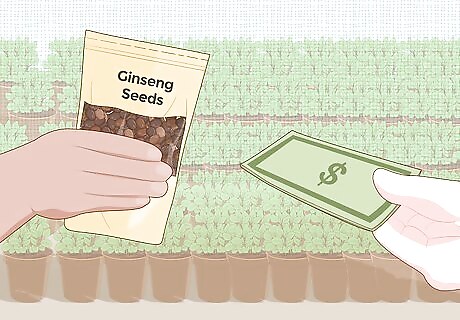
Purchase or harvest ginseng seeds. Note that some regions have laws prohibiting or limiting the harvest of wild ginseng; look these up for your state, country, or region before searching for wild plants. If you are not legally allowed to pick them, or you cannot find the exceedingly rare wild plant, purchase seeds from a local grower or online. "Green" seeds will be cheaper than cold stratified seeds, but require a few months of preparation, described below. Soft, moldy, or discolored seeds are not suitable for planting. You may be able to return them to the seller for a replacement. Order seeds in advance in July or August, and have them delivered in the fall. Waiting until fall will likely leave you with the lowest quality seeds.

Keep seeds moist before planting. Keep purchased, stratified seeds in the refrigerator in a plastic bag. Mist the seeds with a spray bottle once a week until you are ready to plant. If the seeds ever dry out, they will die.
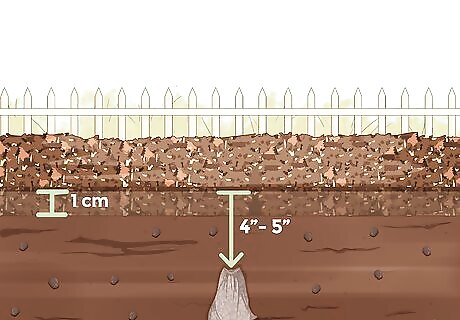
Prepare your seeds for sprouting if they are not stratified. When a ginseng plant produces seeds in the wild, the seeds do not sprout the following year. To accomplish this, they require a year of stratification, a process in which the seeds lose the flesh of the berries that encase them and prepare to sprout. Most store-bought seeds are already stratified, but if you harvested them yourself or bought "green" seeds, you'll need to perform the process yourself. Depending on how many seeds you have, use one of the following methods: Place a small amount of seeds in a pouch made of lightweight mesh, tied with wire. In autumn, bury the pouch under 4 to 5 inches (10 to 13cm) of loose, shaded soil. Cover with several inches (~10cm) of mulch. Mark the location well and keep it moist, but not soaked. Place a large amount of seeds in a special container to drain water and keep out rodents. Construct a wooden box with a screen top and bottom, up to 8 to 12 inches (20 to 30cm) deep if you have enough seeds for several layers. Fill the box with alternating layers of moist sand and seeds. Bury the box with the top 1 to 2 inches (2.5 to 5cm) below the soil. Cover with mulch and mark the location. Water it if the soil dries out.

Plant sprouting seeds in the spring. If you stratified your own seeds, dig up the container and see if any of the seeds are ready. Discard soft, moldy, or discolored seeds. If any seeds are sprouting, plant them immediately. Return the rest to the container and bury it again, stirring them around first and checking that the sand or soil is still moist.
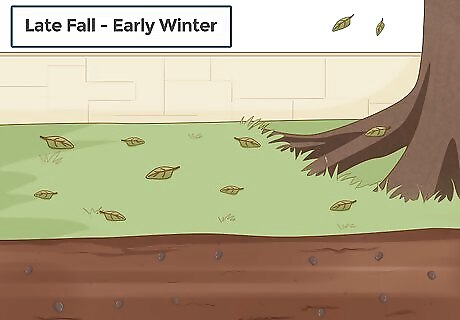
Sow other seeds in the fall. Most seeds should be sown in the autumn, after the leaves have fallen from the trees but before the ground freezes. Ginseng seeds will do best when sown in late fall or early winter, and planting should occur when the ground is moist, such as after a rain.
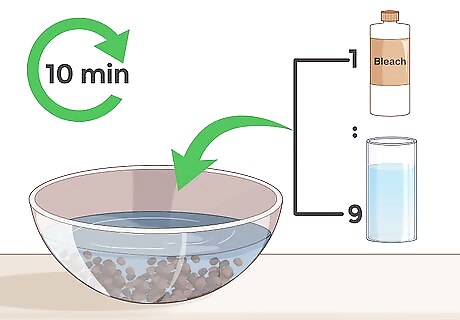
Soak seeds in bleach and water before planting. Unless your seeds are sprouting, soak them in a mix of 1 part household bleach and 9 parts water. Leave them in for 10 minutes to kill some of the fungus spores that often infect ginseng seeds. Seeds that float are most likely empty and dead, and should be discarded. Rinse the remaining seeds in clean water afterward and take them to your site to plant. You may also treat your seeds with a fungicide, but make sure it is safe for use on ginseng first.
Planting the Seeds
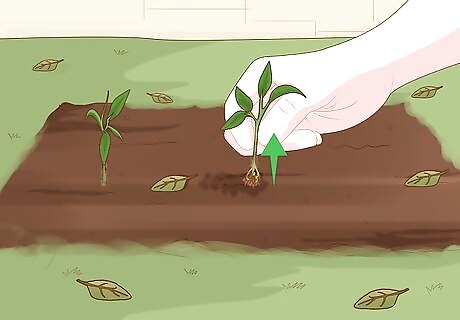
Remove small weeds and ferns from the area. It is not desirable to remove all plants from the area, but small underbrush will compete with the ginseng. Ferns in particular create a chemical that can kill nearby plants, so remove them or avoid areas adjacent to those plants.
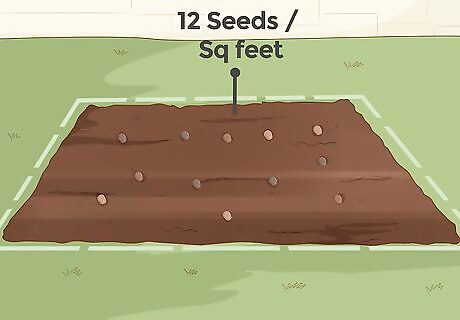
Plant large numbers of seeds quickly by scattering them. If you want your ginseng to grow in the most wild conditions possible, or if you have a large quantity of seed, you may wish to simply scatter the seed on the selected planting site. Remove the leaf litter from the ground first. Aim to scatter about 6 to 12 seeds per square foot (65 to 120 seeds per square meter).
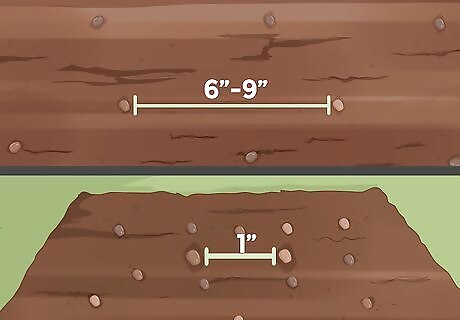
Plant smaller numbers of seeds more thoroughly. Even most wild-simulated ginseng is planted with a little preparation and a couple standard gardening implements. First, rake leaves off the forest floor to expose the topsoil. Use a hoe to create furrows running up and down the slope. Plant according to needs: Plant the seeds 6 to 9 inches (15 to 23 cm) apart if you plan to harvest large, 7+ year old ginseng. This is a typical planting method for wild-simulated ginseng, as the wide spacing reduces the risk of disease spreading. Plant as little as 1 inch apart if you have a large number of seeds and want to harvest sooner. This method is more commonly used for field-cultivated ginseng, since the densely planted ginseng must be carefully watched and treated for disease and pest control. It is not recommended for first time growers.
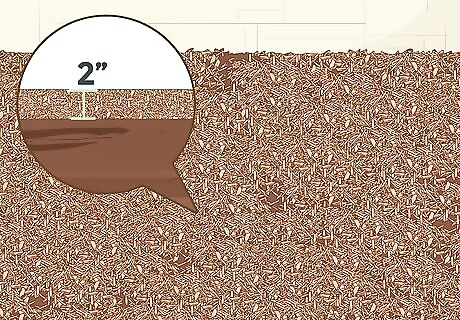
Cover the area with leaves or mulch. Replace the leaf litter that you raked off, or add a layer of mulch. This keeps the ground moist, which is vital for ginseng. Use 1 to 2 inches (2.5 to 5cm) of ground cover but no more, since the ginseng sprouts will not be able to push through a thicker layer. You should use 4 inches (10cm) of mulch if you live in an area with cold winters and frequent frosts, but remember to reduce this to lower levels in the spring. Do not use whole oak leaves. These are too tough and large for sprouts to grow through. Shred them first if you have already bought oak leaf mulch.
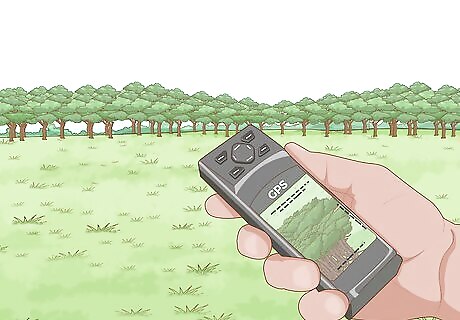
Mark the plot discreetly or locate it using a GPS device. You’re not going to need to visit the site much, and the look of the forest can change a great deal over the 7+ years it takes for your plants reach maturity, so make sure you can find them again. The best way to do this is to use a GPS device to determine the exact coordinates of the plot. This way you don’t leave any telltale signs that might invite poachers. If you must mark the plot, make sure your markers don’t readily draw attention.
Caring for your Plants and Harvesting
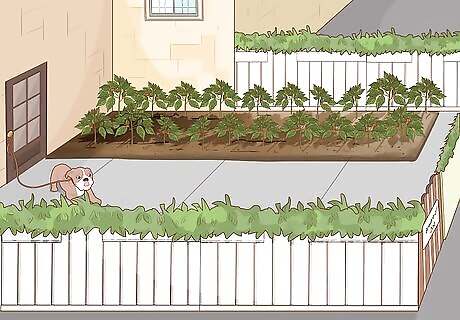
Keep the location secret and secure. Because wild ginseng is so valuable, poachers are common in regions where it is grown. Fencing off the area won't deter someone who knows the ginseng is there, but it may prevent people from discovering the site. A loud dog may be an excellent thief deterrent.
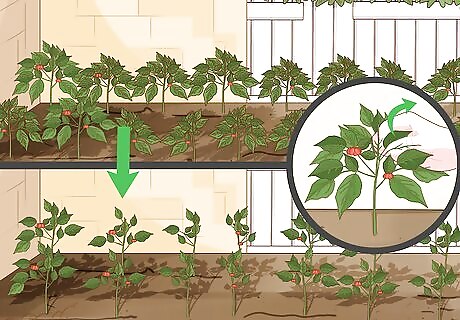
Thin densely growing ginseng each year. Ginseng that grows too close together may spread disease between plants or compete with each other for nutrients. Consider removing or transplanting plants after the first growing season to get down to 6 plants per square foot (65 per square meter), and again after the second year of growth down to 1 or 2 plants per square foot (11 to 22 per square meter). You may also plant ginseng in other areas each year during the fall to develop an ongoing harvest. Many growers do this so they have mature ginseng to harvest each year after the first batch matures.

Research carefully before using pesticides and pest poison. One major advantage to the wild-simulated method is a reduced risk of pest and disease, due to the wider spacing. While a few plants or berries may be eaten occasionally, you are unlikely to lose many of the valuable roots, and diseases shouldn't spread between plants at a high rate. If you do encounter a problem, contact your local wildlife department for information about ginseng pesticides. Keep in mind that you may lose your organic certification or your credibility in selling wild-simulated ginseng if you use pesticides.
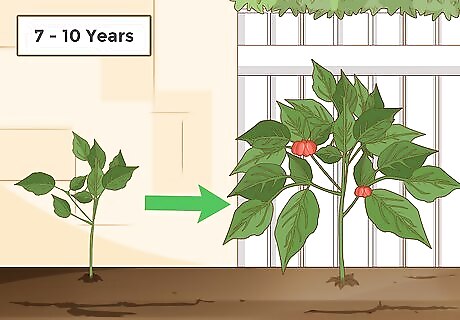
Wait for the plants to mature. You'll need to wait about 7 to 10 years for your plants to mature into large, valuable roots, but with the right site and a little luck. Growing ginseng with the wild-simulated method requires a lot of patience, but almost no maintenance. Check periodically to see if the ground remains moist and covered with a small amount of leaf litter. If your ginseng is planted densely, harvest after 4 years or the roots might begin to dwindle These roots will not be as valuable, however.
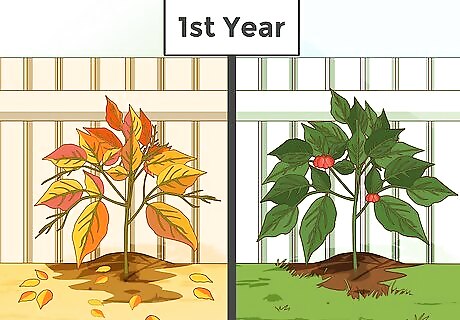
Don't expect the plants to stay visible year round. The part of the ginseng plants above the surface will die back in the autumn, but grow again in the spring. It will grow bigger each time, and all the while, the root below will be growing larger.
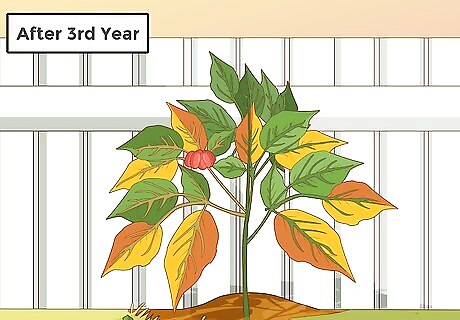
Harvest red berries annually after the third year. Once the plants have matured, they will produce a cluster of red berries with the seed in the center. Pick these in the fall if you want to harvest the seeds for planting or selling. Keep in mind they will need to be stratified as described under Preparing the Seeds.
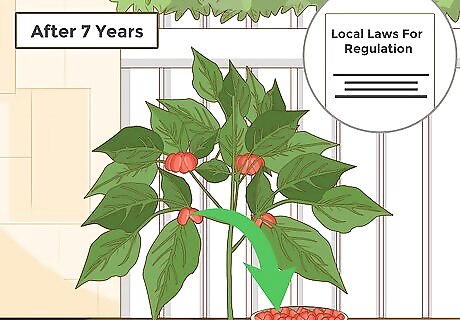
Harvest mature plants at any point past the seventh year. Given how long it takes ginseng to reach maturity, you’ll probably want to harvest your plants as soon as you can, which is typically 7 years for a high quality root. If you’re not in any hurry you can leave them in the ground for many more years and they will continue to grow. If you are in a hurry, check local laws for regulations on how early you can harvest ginseng.
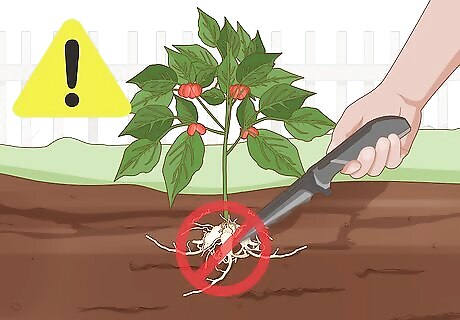
Dig carefully so as not to damage the root. Use a pitchfork or needle-nose spade to dig under the plant, and leave plenty of space (about 6 inches or 15 cm) between the plant and where you push the pitchfork or spade into the ground. If the plant is close to immature ginseng plants, use a smaller implement such as a stout flat blade screwdriver about 8 or 10 inches (20 to 25 cm) long, and work with extra care. If there is any risk of damaging the roots of adjacent immature ginseng plants, do not attempt to harvest the plant until the other plants mature. Note: Ginseng plants typically grow at a 45º angle into the soil, not straight down, and will fork into several sections. Dig carefully and make sure you don't break the root.

Wash and dry the roots. Briefly soak the roots in a bucket of cool water to remove excess soil. Then place the roots in a single layer on a wooden tray and wash them gently under a sink faucet or with a hose. Make sure the roots are not touching and let them dry on a wooden rack in a well-ventilated room with a temperature between 70º and 90ºF (21–32ºC). Humidity should remain between 35 and 45% to prevent drying the plant too quickly and reducing its value. Turn the plants once per day. The roots are ready when you are able to snap them, but you should only do this on a single test root now and then. Do not scrub the roots or wash them too vigorously—some of the medicinal chemicals are concentrated in the root hairs, and removal of these hairs will decrease the usefulness and value of the root. Small roots take a day or two to dry, but large, mature roots may take up to six weeks. Direct sunlight usually dries the roots too fast, but if you see any mold or discoloration growing, put them in direct sun for a few hours to kill the infection.




















Comments
0 comment